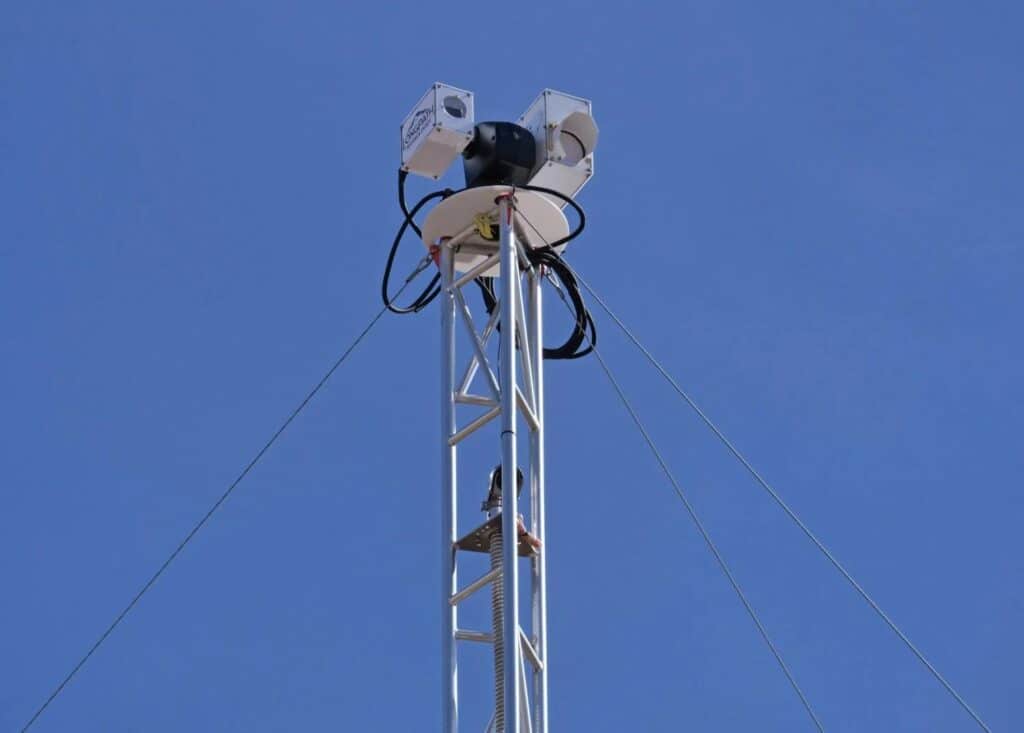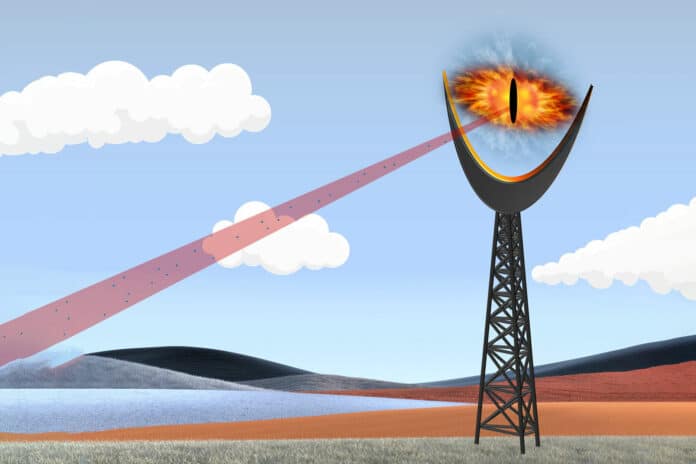A team of engineers and chemists at the University of Colorado Boulder, California Institute of Technology, University of California Santa Barbara, and three companies is working on an innovative technology to help improve safety in industrial plants. The idea is to use a laser-based device to quickly identify and analyze airborne particles in the event of an industrial accident.
The laser-based device they’re developing, the Standoff Aerosol measUrement Remote Optical Network (SAURON), borrows its name from the villain in “The Lord of the Rings” book series – a presence who often takes the form of a flaming eye and whose “gaze pierces cloud, shadow, earth.”
“That’s the idea here: an all-seeing eye that can detect hazardous aerosols against a very crowded background of other substances,” said Greg Rieker, professor in the Paul M. Rady Department of Mechanical Engineering and principal investigator for the project.
SAURON will zoom in on aerosols, the term for a wide range of tiny particles that float in the air. Some aerosols can contain chemicals that pose serious risks to humans, such as Polycyclic Aromatic Hydrocarbons. Ammonium nitrate, a common ingredient in explosives, also forms aerosols. So can fentanyl, an opioid drug that can be deadly in even small quantities.
To detect such hazards, the team is turning to a Nobel Prize-winning technology called a frequency comb laser. This project could potentially help protect people from a wide range of airborne threats, from industrial accidents to chemical attacks in crowded cities.

“The lasers will run off of batteries, so you can deploy them at an airport, on city blocks or in industrial sites where they use hazardous materials,” said Scott Diddams, professor in the Department of Electrical, Computer & Energy Engineering. “Right off the bat, people would know if there was a failure or a leak.”
Spotting dangerous aerosols is no easy task, especially given the complexity of the air we breathe. With so many different compounds like methane and carbon dioxide present in the atmosphere at any time, it can be difficult to differentiate between harmful aerosols and harmless ones.
The use of frequency comb lasers in the SAURON project could potentially help to sort through this clutter and identify hazardous aerosols more quickly and accurately.
The team at JILA, a joint research institute between CU Boulder and the National Institute of Standards and Technology (JILA), pioneered the use of frequency comb lasers in quantum metrology and optical clocks. These lasers emit a beam of light with millions of colors simultaneously, allowing them to act as a fingerprint scanner for aerosols – teasing out the signals from even minute concentrations of particles or gases in the air.
LongPath Technologies is a company that utilizes these tools to search for methane leaks at oil and gas facilities, co-founded by Rieker in 2017.
In future work, SAURON researchers will work to make their lasers even more sensitive and much more compact. The team is utilizing innovative “integrated photonics” technology that was developed by Kerry Vahala at Caltech, John Bowers at UC Santa Barbara, and companies Nexus Photonics and hQphotonics. Instead of using electronic signals, they are using chips that can transmit information using light beams.
Researchers are transforming fundamental science into practical technologies that can help keep people safe. “We’re taking technologies that have been developed for quantum science and are translating them for a wide range of applications,” Rieker said.
